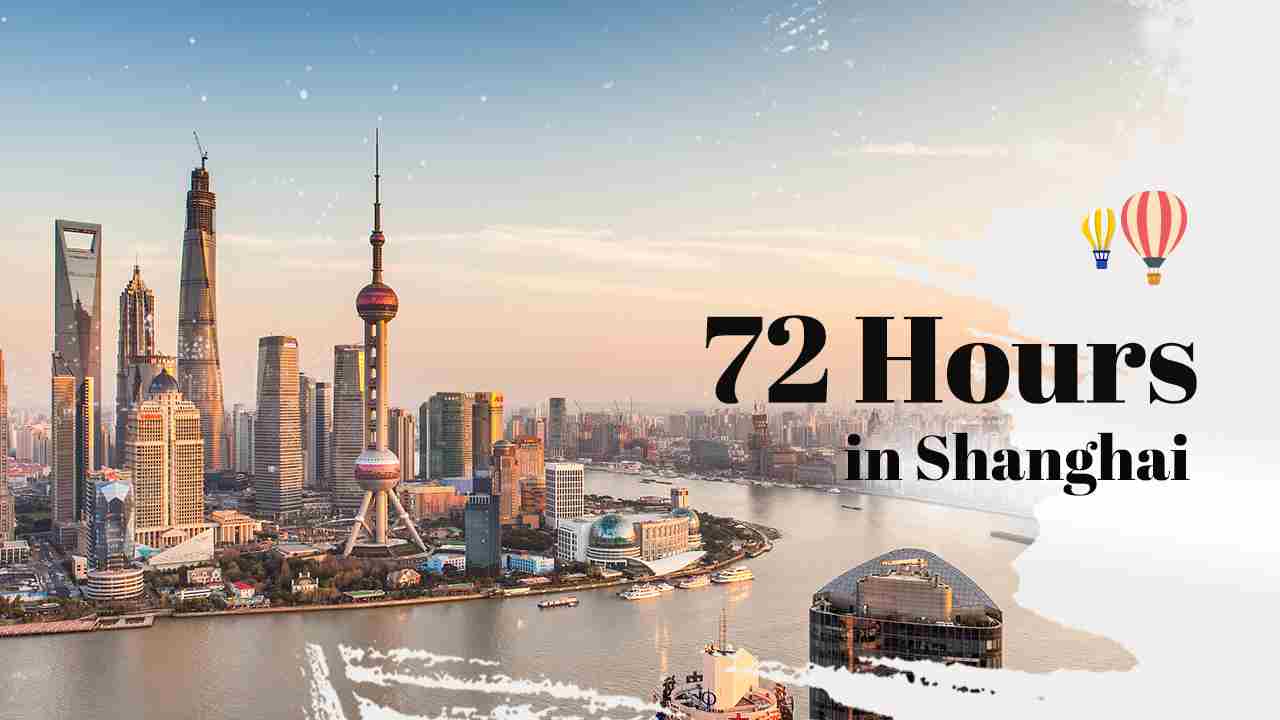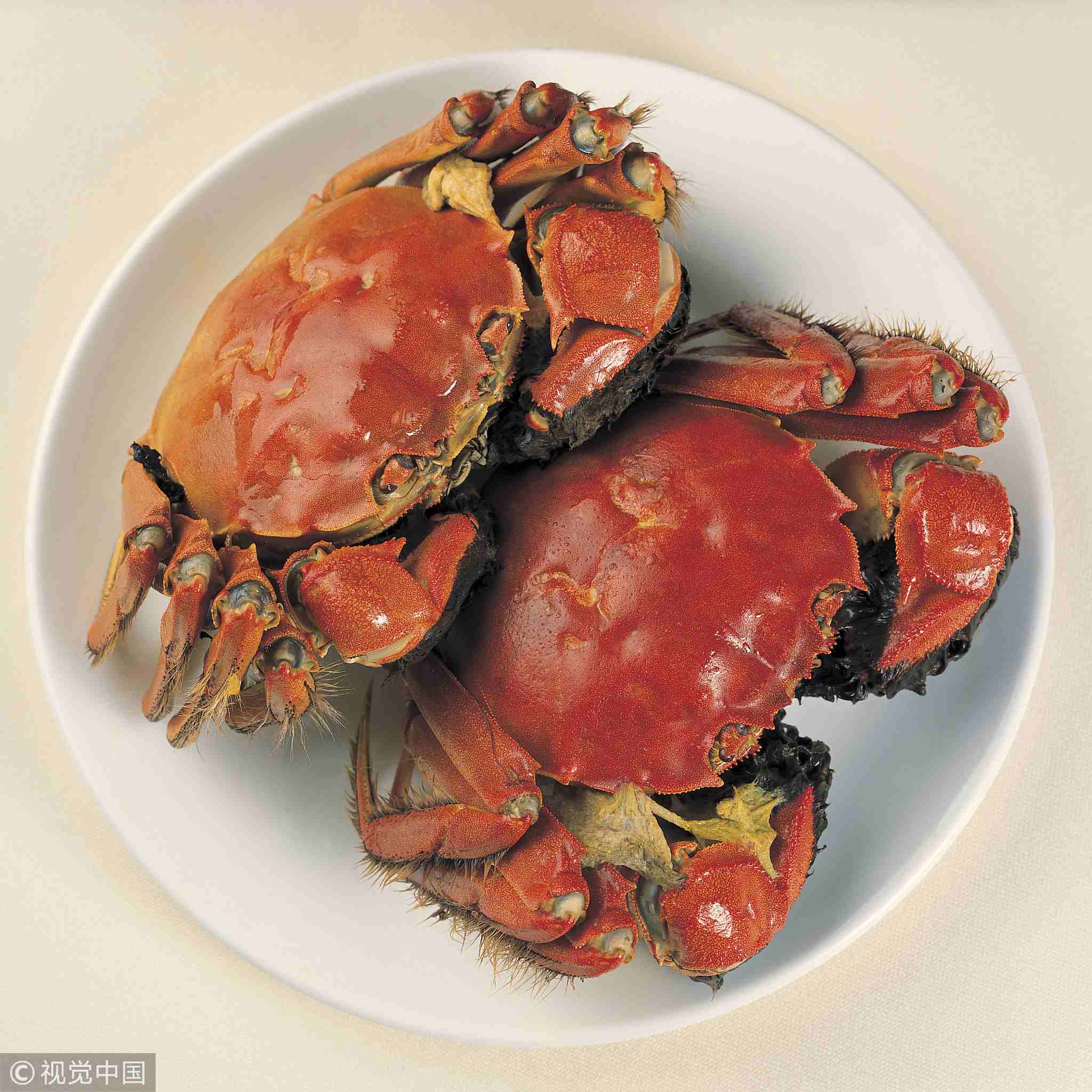Shanghai, also known as the Pearl of the Orient, is well known for being full of vibrant energy, as well as China's financial hub. Unlike Beijing, Shanghai has a shorter history, but perfect for visitors hoping to get a taste of China, in a more accessible way.
Seventy-two hours seem to be a ridiculous amount of time to explore Shanghai, but like a short history of itself, it is possible to fit a lot in.
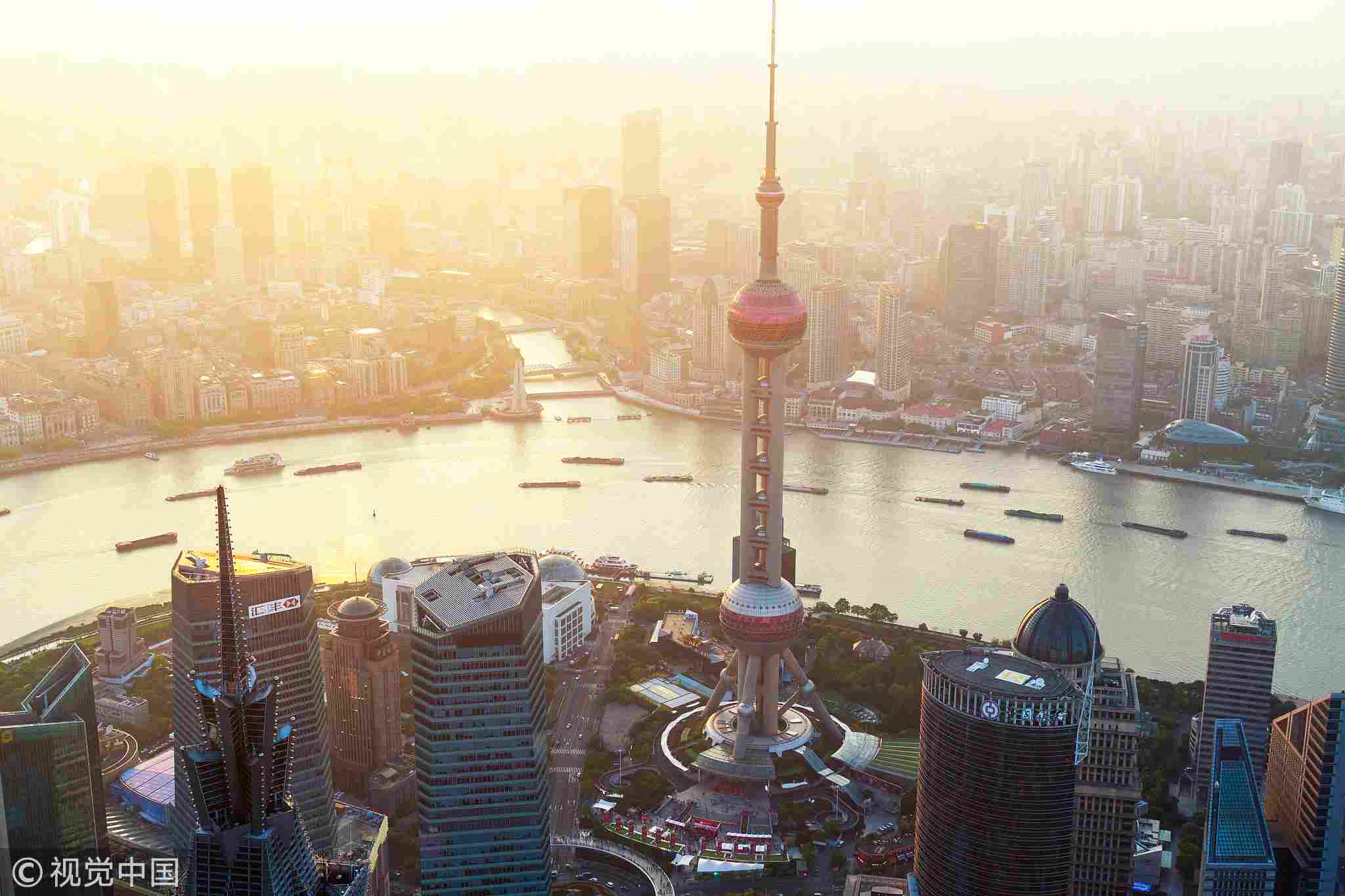
The view of Shanghai. /VCG Photo
The view of Shanghai. /VCG Photo
As for getting around in Shanghai, I would normally recommend the subway, however if you are in a rush, cabs are accessible. The subway in Shanghai is convenient and could lead you to almost every local attraction around the city. Here is how to fill your 72-hour transit in Shanghai:
The Bund: The symbol of Shanghai
Many visitors have chosen this place as their first stop since the Bund itself is full of history and culture, and is one of the city's most well-known landmarks.
The Bund stretches for about a mile along the waterfront promenade next to the Huangpu River from the Waibaidu Bridge to Nanpu Bridge. What impresses visitors the most are the 52 buildings with various international architectural styles including Gothic and baroque, which make the Bund “An Exhibition of International Buildings.”
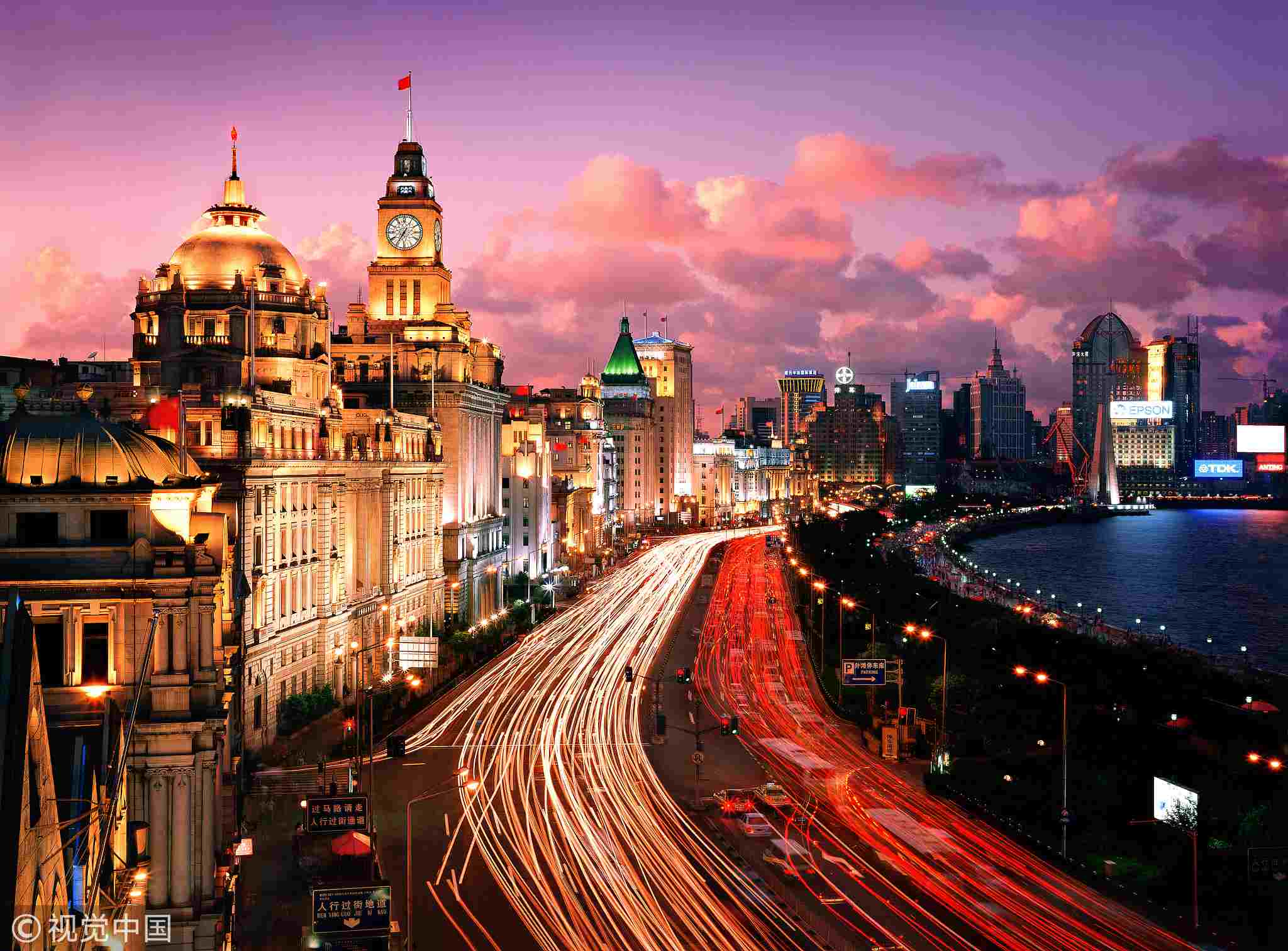
The Bund, Shanghai, China. /VCG Photo
The Bund, Shanghai, China. /VCG Photo
There are many ideal positions to see a panoramic view of the Bund: Pudong Binjiang Avenue, on a Huangpu River Cruise, or in one of the skyscrapers in Pudong like Shanghai World Financial Center or Oriental Pearl Tower.
Apart from the stunning view, the Bund is also a popular place for locals to do their morning exercises, such as Tai Chi, feel free to join and get a sense of the local lifestyle.
Cruising the city at night
After a long day walk along the Bund, I would suggest taking a Huangpu River Cruise at night. On the cruise, you could not only appreciate the historical architecture on the Bund, but also enjoy the modern skyscrapers opposite the Huangpu River. As the skyscrapers light up in Pudong, you could catch a glimpse of what the future might look like.
Tip: There are many tour lengths for you to choose from, ranging from 30 minutes to 3.5 hours.

Night time cruise ship on the Huang Pu River. /VCG Photo
Night time cruise ship on the Huang Pu River. /VCG Photo
Nanjing Road walking street
With a history of over 100 years, Nanjing Road is Shanghai's busiest shopping street lined with top-end shopping malls, old-brand shops, and traditional eateries. It stretches from Xizang Middle Road in the west to Henan Middle Road in the east, with a length of about 1,033 meters. It runs through the whole pedestrian area, and when you walk to the end of the Nanjing Road, you could easily see the Bund.
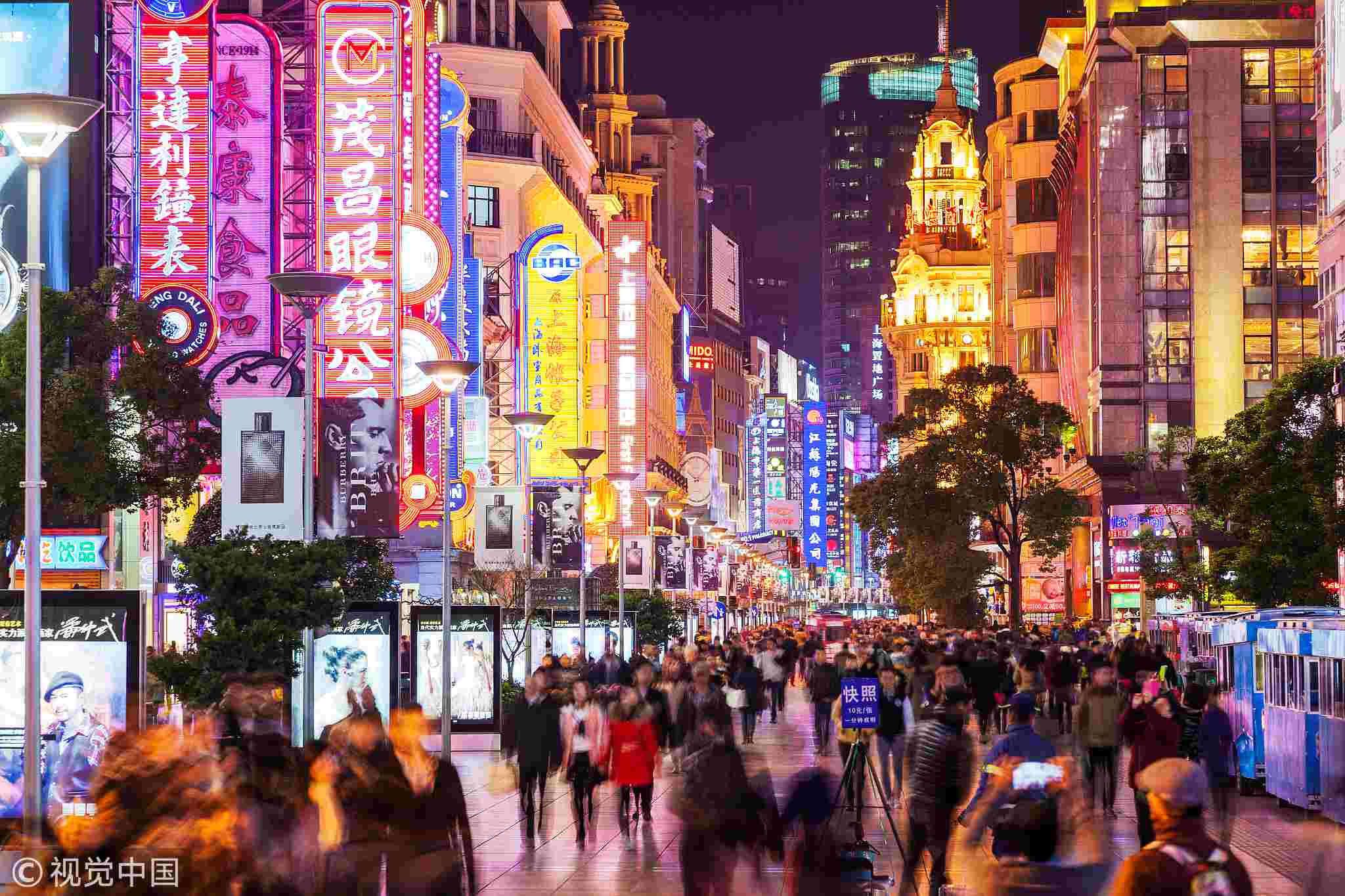
Nanjing Road Walking Street, Shanghai. /VCG Photo
Nanjing Road Walking Street, Shanghai. /VCG Photo
If you feel tired strolling through Nanjing Road, just head to the popular and traditional restaurant – Shen Da Cheng. Here you could taste almost all kinds of Shanghai’s local snacks. Among them, pastry balls are the most famous.
Tip: Take the subway Line 1 or Line 2 to the East Nanjing Road Station or the People’s Square Station.
Jin Mao Tower
The 88-story Jin Mao Tower lies in the center of Lujiazui Finance and Trade Zone in Pudong. It can be conveniently accessed from Puxi (west of the Huangpu River) by taking the tunnel for about two minutes. It is 420.5 meters (almost 1,380 feet) tall and covers an area of 2.3 hectares (5.68 acres). The architect, Adrian Smith, ingeniously combined the elements of traditional Chinese culture with the newest architectural styles of the time, which makes it one of the best-constructed buildings in China.
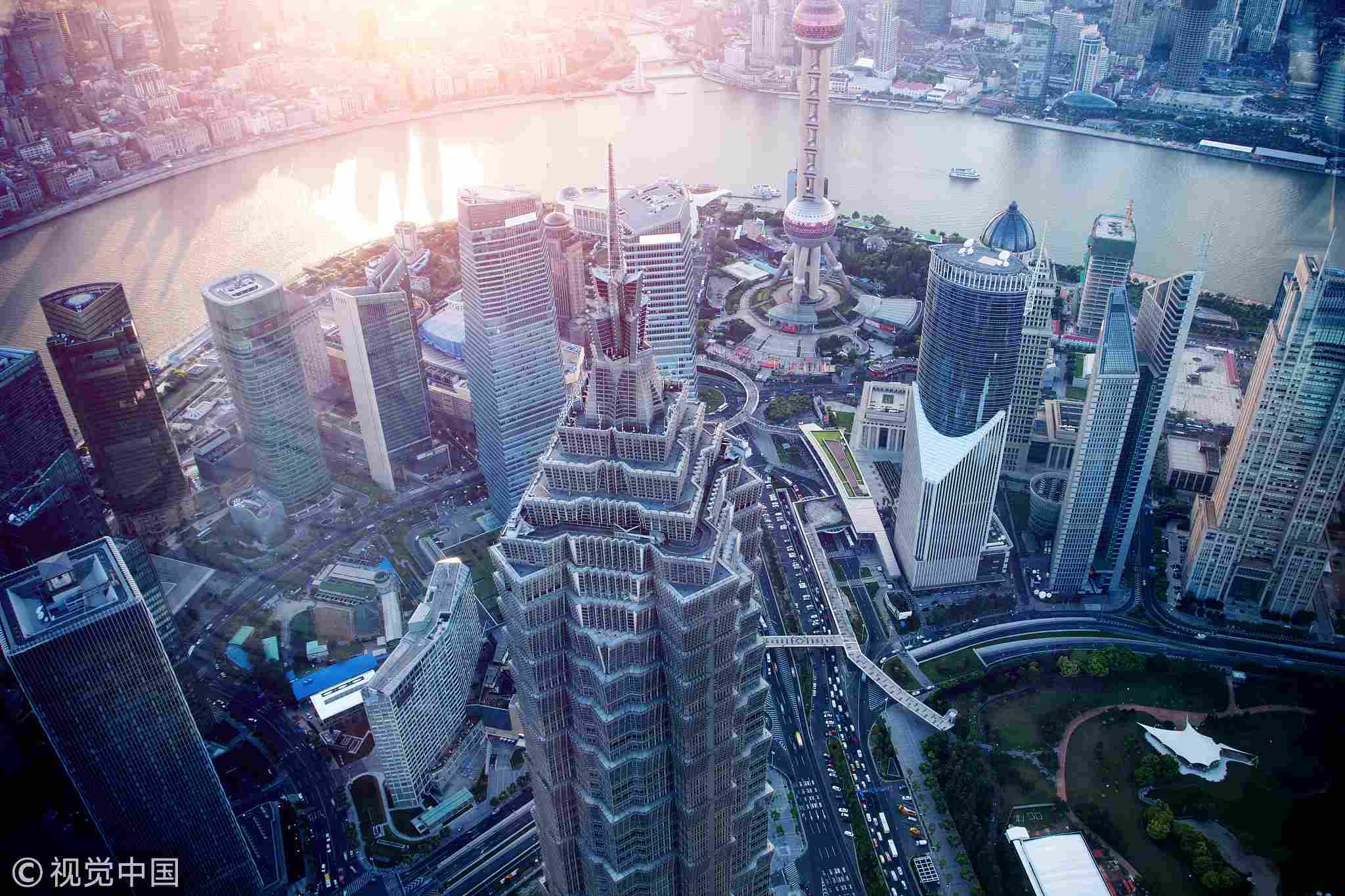
The aerial view of Jin Mao Tower. /VCG Photo
The aerial view of Jin Mao Tower. /VCG Photo
Take a skywalk!
Jin Mao Tower gives you the unique option to "wander in the clouds." Visitors can walk along a 60-meter-long and 1.2-meter-wide glass skywalk without rails. It's situated on the 88th sightseeing floor. From there, visitors get a panoramic view of the scenery on the banks of Huangpu River.
Tip: If you wish to experience the skywalk, you need to arrive at the 88th sightseeing floor 45 minutes in advance for security check.
Yuyuan (Yu Garden)
Yuyuan, also known as Yu Garden, was a private garden of the Pan family and was first built in 1559 by Pan Yunduan. Lying in the center of Shanghai's Old City and beside the City God Temple, this place blends decorative halls, elaborate pavilions, glittering pools, zigzag bridges, pagodas, archways, and impressive rockeries.
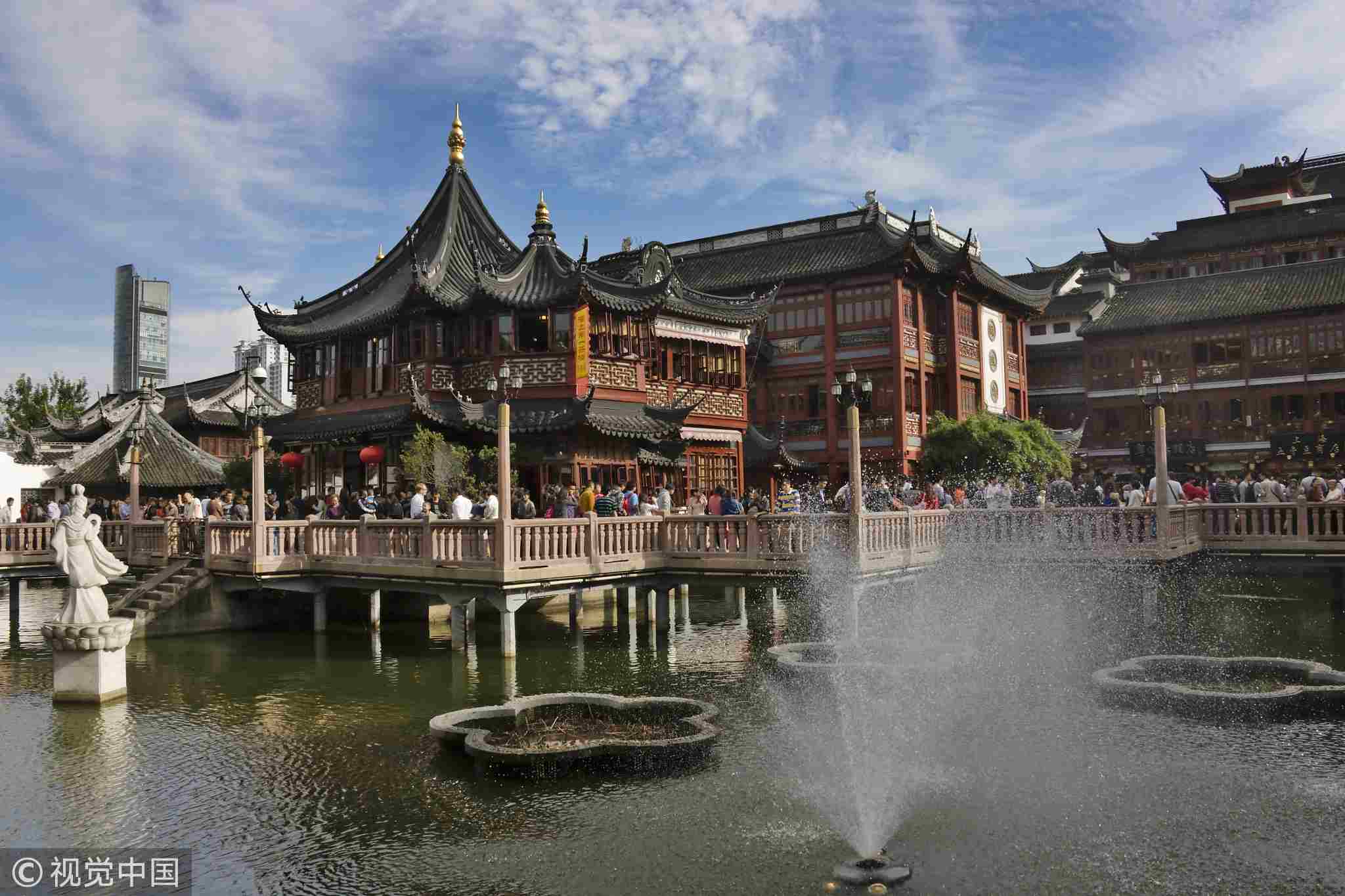
Yu Garden, Shanghai, China. /VCG Photo
Yu Garden, Shanghai, China. /VCG Photo
The best time to visit Yu Garden is in spring, when the garden is dotted with green trees and blossoming flowers.
After wandering around Yuyuan about an hour, you could head to the Yuyuan Bazaar, just next to Yu Garden. It has a lot of small streets and lanes, where you could easily find many local restaurants, tea houses, and shops for relaxing.
Oriental Pearl Tower
Across the Huangpu River is perhaps the city’s most striking view, certainly at night, and the neon-lit panorama of the city’s financial district in Pudong – Oriental Pearl Tower. Its location at the tip of Lujiazui in the Pudong New Area by the side of Huangpu River, opposite the Bund, makes it a distinct landmark in the area.
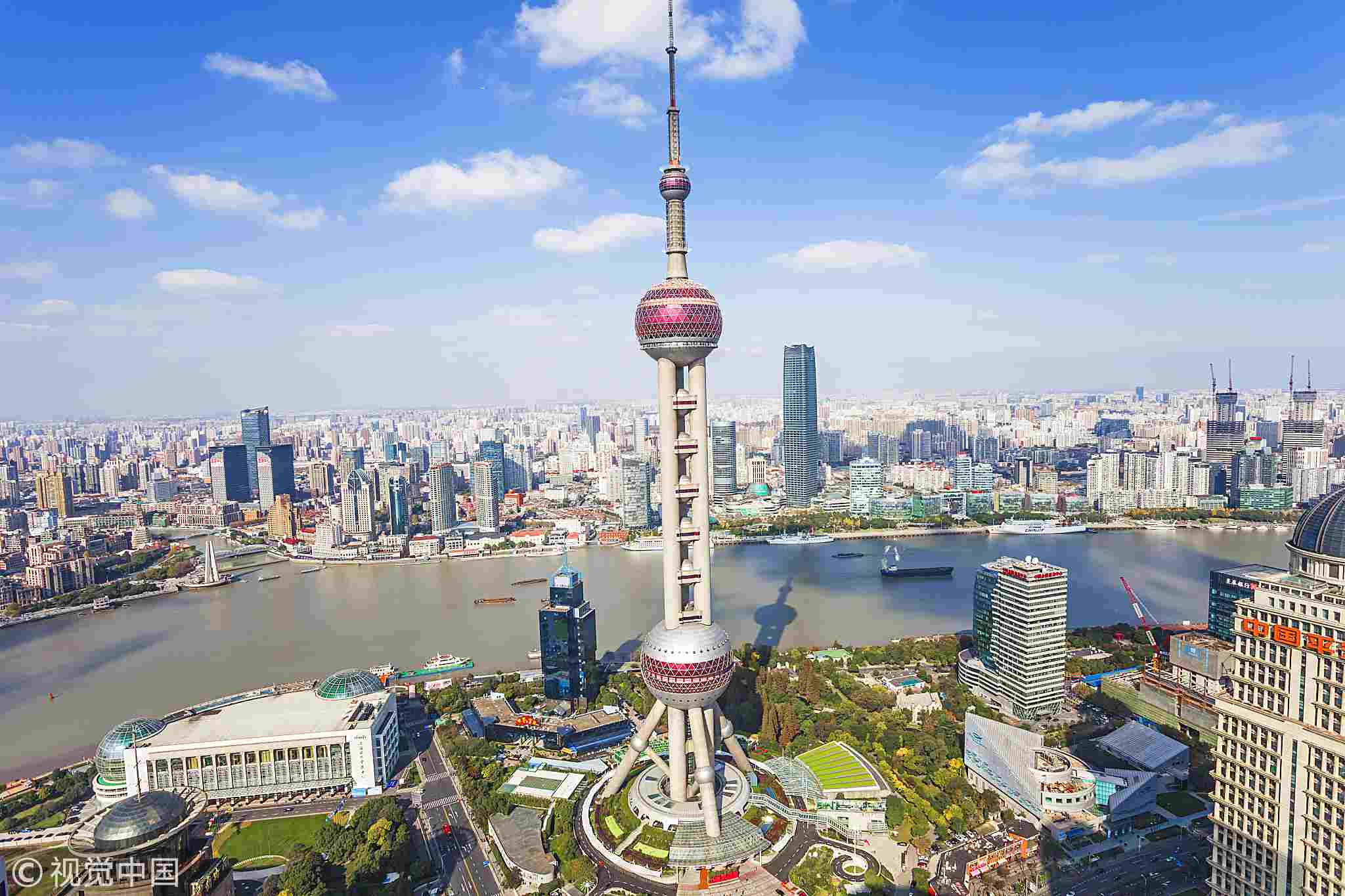
The aerial view of Oriental Pearl Tower, Shanghai. /VCG Photo
The aerial view of Oriental Pearl Tower, Shanghai. /VCG Photo
With a height of 468 meters, it was the tallest structure in China from 1994–2007, when it was surpassed by the Shanghai World Financial Center.
People say it wouldn't be the Shanghai skyline without the Pearl Tower. Other buildings might come up around and above it, but this was the first building to define the Shanghai cityscape.
Xintiandi: A combination of modern life and the old Shanghai
Xintiandi is recognized as the city’s newest nightlife district. Situated in the middle of Shanghai Town, Shanghai Xintiandi has a unique style due to its building structure. It retains the antique walls, tiles and exterior of the Shikumen housing of old Shanghai.
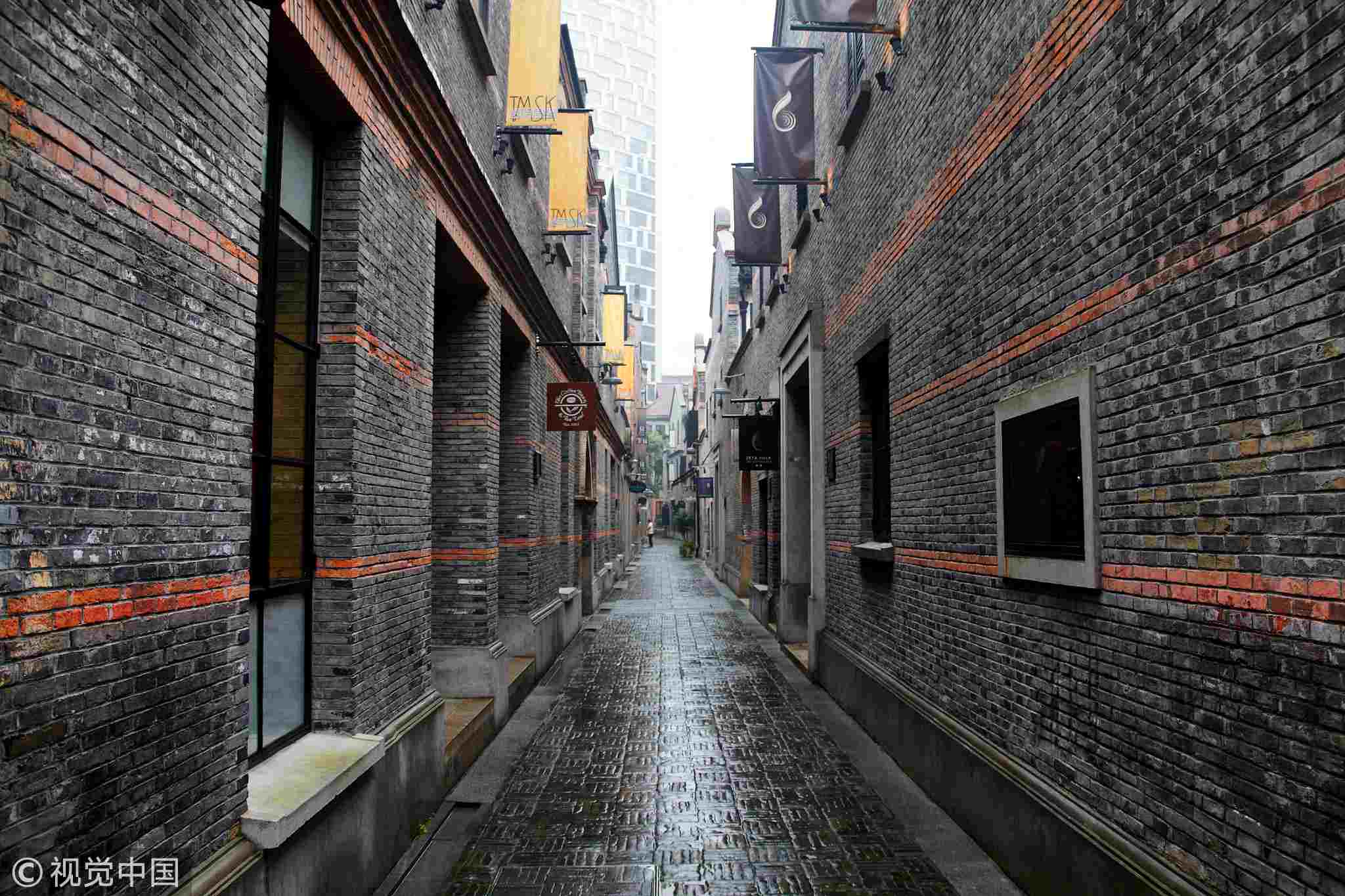
The alley in Xintiandi, Shanghai. /VCG Photo
The alley in Xintiandi, Shanghai. /VCG Photo
On the other hand, its interior presents the modern lifestyle of the youngsters – there are many international galleries, nightclubs, bars, cafes and boutiques around, providing leisure and entertainment. It has gradually become a tourist attraction, especially with the younger crowd.
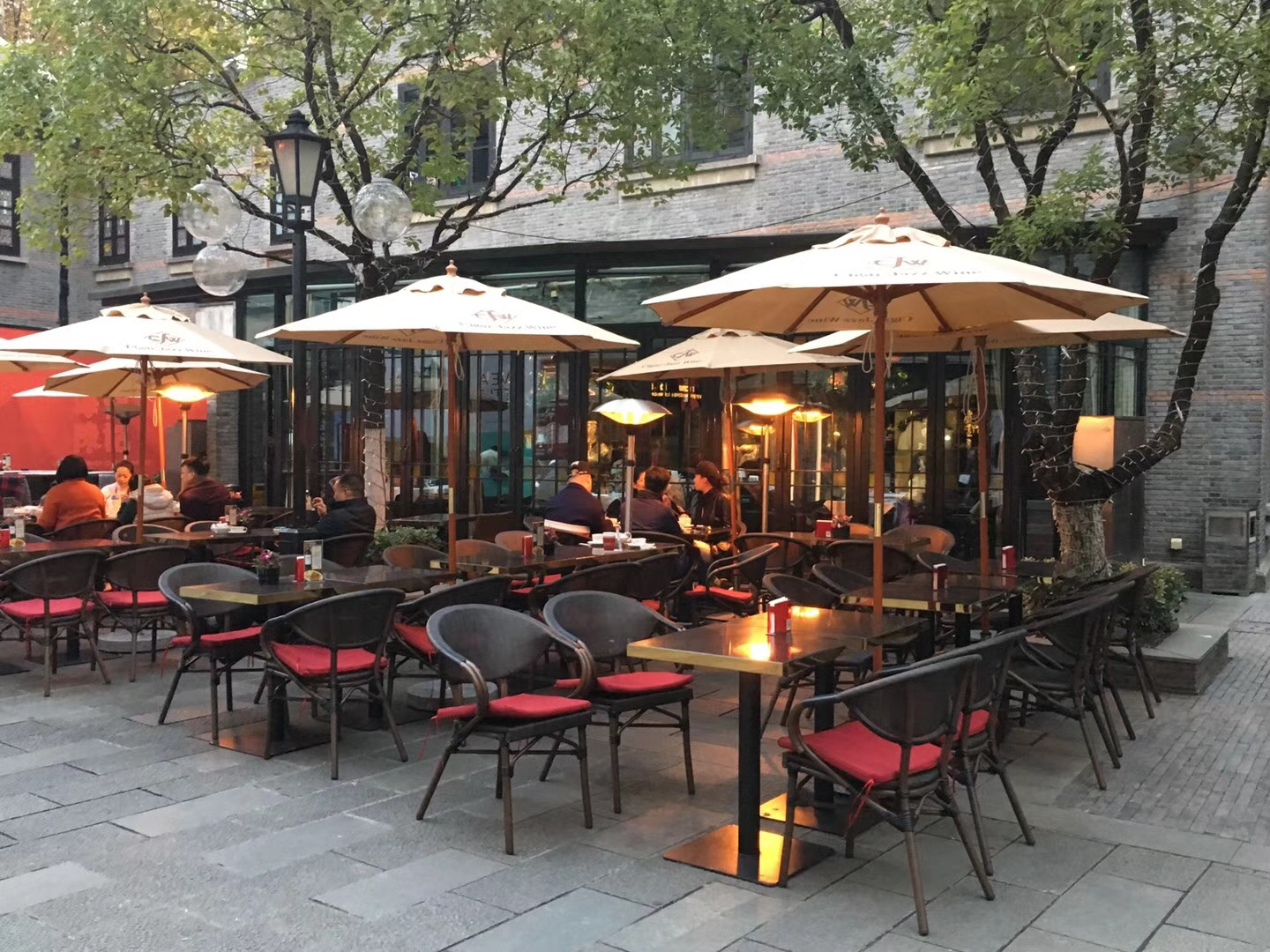
Xintiandi, Shanghai. /CGTN Photo
Xintiandi, Shanghai. /CGTN Photo
Tip: Take subway Line 1 to South Huangpi Road Station or subway Line 10 to Xintiandi Station.
How to eat like a local
Like many modern cities in the world, Shanghai is a place full of wonderful choices when it comes to food. You can’t come to Shanghai without trying its famous traditional dishes.
Shanghai hairy crabs: Da Zha Xie
Shanghai hairy crabs, or Da Zha Xie in Mandarin are found in the crab-breeding Yangcheng Lake. locals always say that the steamed crab is the most traditional and ritualized way of eating hairy crab.
We recommend eating Da Zha Xie his way: First, you need to take the apron and top shell of the crab off. It is where the roe is on female crabs – a savory area for tasting. Chopstick-poking and digging can push the meat out from the crab legs and claw. And then, dip into the yummy vinegar, brown sugar and ginger sauce along the way.
Shengjianbao: Pan-fried pork buns
Shengjianbao, also called pan-fried pork buns, is traditionally served as a breakfast item in Shanghai. It is similar to the more internationally well-known Xiao Long Bao.
In terms of cooking method, Sheng Jian Bao is pan-fried on a cast iron pan until the bottom turn a crispy brown. Water is then poured inside, giving a steaming effect which renders the top part fluffy. Moist pork wrapped with half-soft, half-crispy dough, this food is a favorite street food among locals.
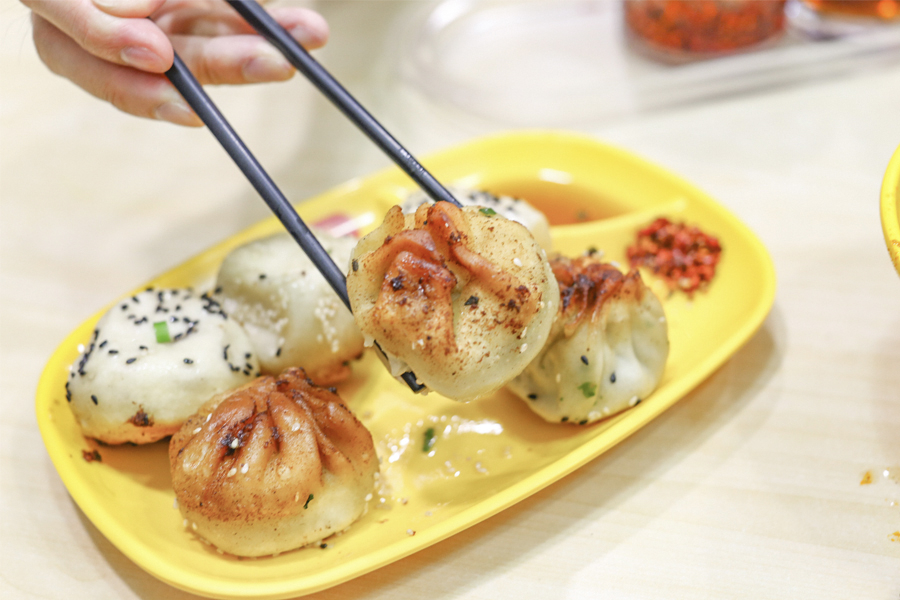
Yang’s dumplings. /Photo via Denielfooddiary.com
Yang’s dumplings. /Photo via Denielfooddiary.com
The most famous chain for Shengjianbao is Xiaoyang Shengjian (Yang’s dumplings). The Yang’s dumplings are not expensive, costing eight yuan for four pork-flavored ones, and 16 yuan for four shrimp dumplings. This shop also offers some soup items including curry soup with duck’s blood, which is the best one to taste together with Shengjianbao.
Tip: We recommend taking a bite to let the juices cool. Otherwise, the juices might burn your tongue or spill. Then dip the dumpling into the dark Chinese vinegar to cool the dumpling to an appropriate temperature.
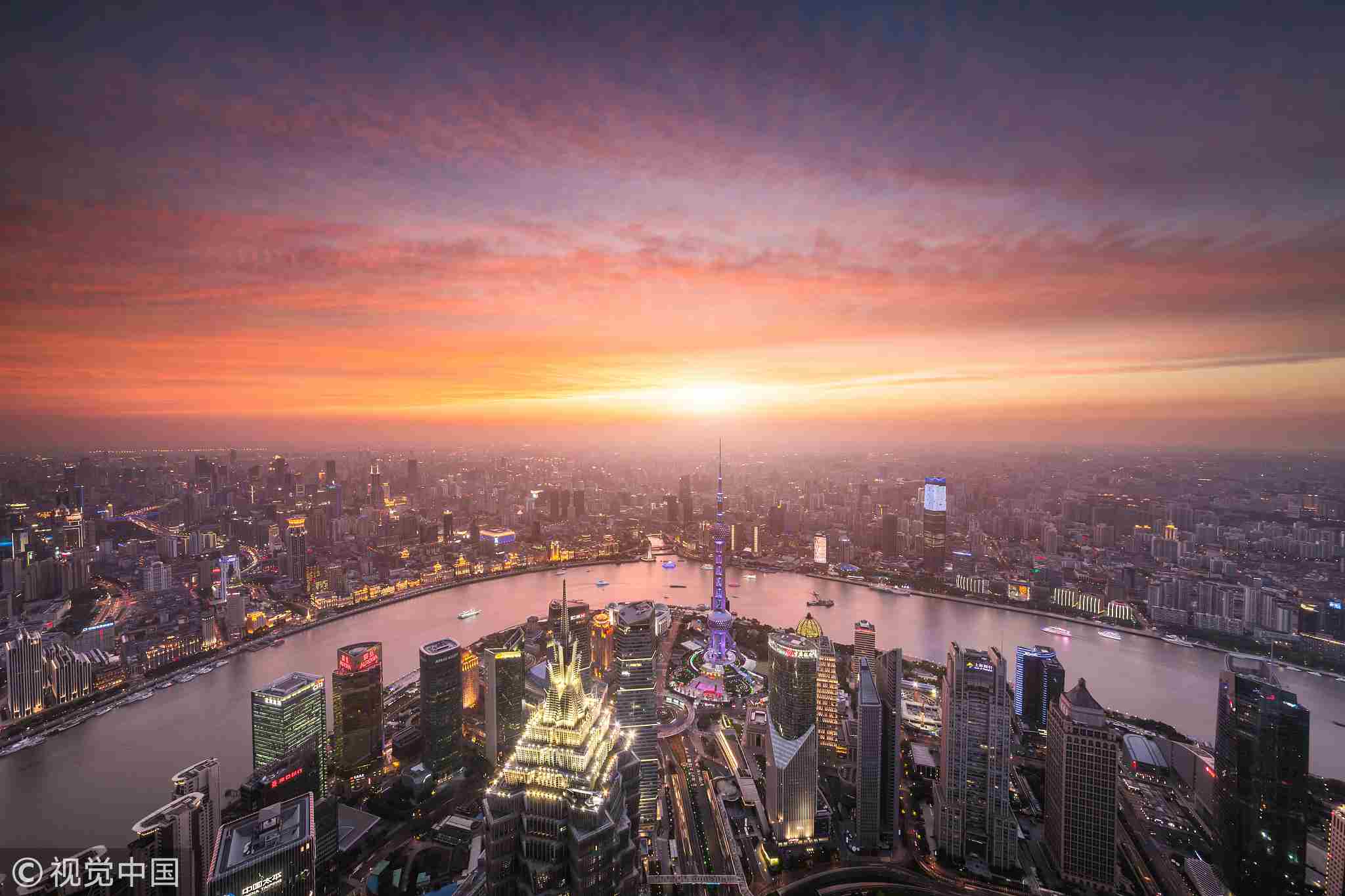
The panoramic view of Shanghai. /VCG Photo
The panoramic view of Shanghai. /VCG Photo
After three-day visit to Shanghai, it might be difficult to believe that less than 200 years ago, Shanghai was just a small fishing port. Now this super big city is home to nearly 25 million people! Living in Shanghai is just like living at the edge of China’s future.

